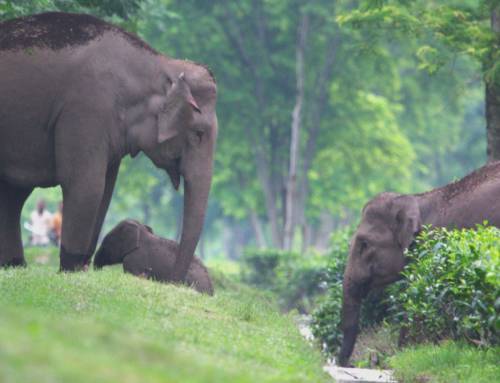Research Article: Puri, M., Marx, A. J., Possingham, H. P., Wilson, K. A., Karanth, K. K., & Loiselle, B. A. (2022). An integrated approach to prioritize restoration for carnivore conservation in shared landscapes. Biological Conservation, 273, 109697.
Blog Author: Shreya Ray
Key Takeaways:
- Global decline of forest cover due to various human activities has resulted in deforestation, habitat degradation, and fragmentation, leading to declining species numbers and local extinctions.
- Habitat restoration has been suggested as one of the most effective strategies for species recovery in human-altered ecosystems.
- The authors used an integrated approach that measured fine-scale measures of large carnivore habitat use, landowner willingness, and management costs to prioritize sites for agroforestry based landscape restoration.
- The study was conducted in the buffer region of Pench Tiger Reserve, Madhya Pradesh, across approximately 1,500 households spread over an area of 800 sq. km.
- The willingness of landowners was affected by several factors such as the percentage of forest cover in the surrounding one square kilometer area, their experience of crop damage by wild herbivores, their level of education, the size of their household, and their agricultural income.
- The authors estimated that in order for landowners to adopt agroforestry systems, they would require an incentive of Rs. 66,000 (USD 940) per acre annually.
- The authors found that priority sites for habitat restoration were defined by high carnivore occurrence and people’s willingness to participate in agroforestry.
Human activities have caused a significant global decline in forest cover. Agriculture, driven by the demand for food, biofuel, and cash crops, is a leading cause of ecosystem alterations. This results in deforestation, habitat degradation, and fragmentation, leading to declining species numbers and local extinctions. To counteract this decline, the United Nations has declared 2021-2030 as the “Decade of Habitat Restoration”. Habitat restoration is critical for restoring the permeability of habitats, facilitating genetic exchange, and reducing local extinction rates. However, the success of forest conservation management plans depends on both top-down governance structures and bottom-up drivers, including the willingness of local communities to embrace conservation interventions.
India is a rapidly developing country that houses some of the largest populations of endangered carnivores, living amidst over a billion people. While almost 20% of the country is forested, less than 5% of the land is included under the protected areas network. Expanding protected areas alone may not be a feasible solution given the growing state of India’s economy. Instead, it is necessary to look beyond protected areas and also focus on the private lands surrounding them. There is potential to restore these modified landscapes through a voluntary incentive-based system in collaboration with local people. Integrating ecological data with socio-economic realities can reveal trade-offs between conservation restoration targets and the feasibility of implementing these actions. To prioritize landscapes for restoration, the authors integrated an approach that measured fine-scale measures of large carnivore habitat use, landowner willingness toward restoration, and management costs.
This case study was conducted in the buffer region of Pench Tiger Reserve, Madhya Pradesh, which spans an area of 800 sq. km, covering four administrative areas: Khawasa, Ghatkohka, Kumbhpani, and Khamarpani. The study area is a complex system with state-owned multi-use forests, private agricultural lands, and approximately 15,000 households. The multi-use forests provide habitats to a diverse assemblage of large- and medium-sized carnivores, including felids, canids, and ursids, supported by the abundant availability of wild ungulates, primates, and domestic prey.
Data on occurrence of tiger (Panthera tigris), leopard (Panthera pardus), dhole (Cuon alpinus), and sloth bear (Melursus ursinus) was collected between December 2018 and April 2019 using camera trap surveys. To understand landowner willingness to engage in conservation stewardship, a ‘stated preference choice experiment’ method was applied. People were asked about their preference to convert their lands to wildlife-friendly agroforestry habitats if provided monetary incentives. Data was collected from questionnaire surveys of 602 private landowners. The study estimated that each landowner would require Rs. 66,000 (USD 940) per acre per year as an incentive amount to adopt agroforestry. Factors that significantly influenced landowner willingness included the percentage of forest cover in the surrounding 1 sq. km area, experience of crop raiding by wild herbivores, level of education, household size, and agricultural income.
Based on the percentage of agricultural areas prioritized under the highest target (30%), the least amount of area was selected in Khamarpani Range, followed by Khawasa Range, Ghatkohka Range, and the highest amount in Kumbhpani Range. The authors found that priority sites for habitat restoration were defined by high carnivore occurrence and people’s willingness to participate in agroforestry.
Integrated landscape management schemes are receiving increasing funding from both government and private agencies. A comprehensive framework is needed to effectively prioritize landscapes for restoration and management. The authors of this study have developed an integrated approach that measures large carnivore habitat use, landowner willingness, and management costs at a fine scale. With this information, a voluntary incentive-based system can be implemented to collaborate with local communities and restore modified landscapes, ultimately leading to the conservation of endangered species.
You can access the original article here.
Keywords: Conservation opportunity, India, habitat restoration, carnivores, social-ecological systems, spatial prioritization




